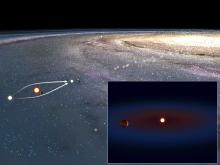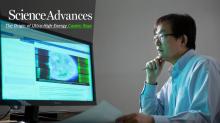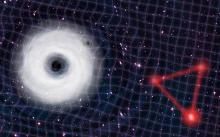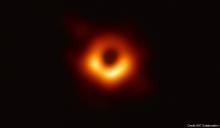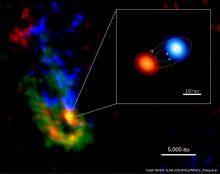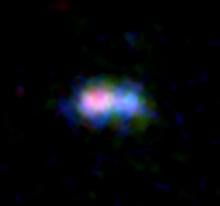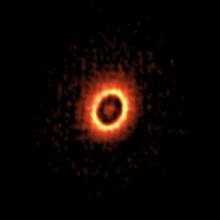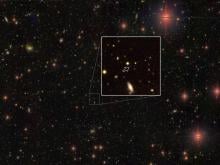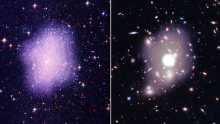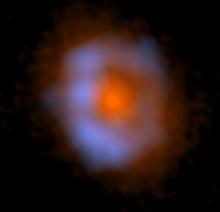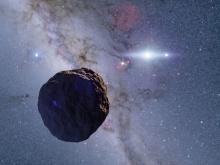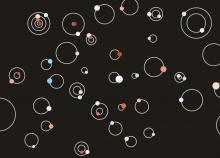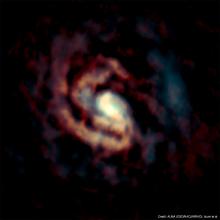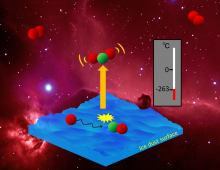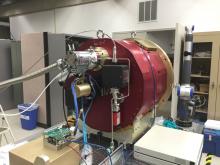Space sciences Astronomy
News
27 Aug 2019
Chair Professor Il Soon Hwang, who joined the School of Mechanical Aerospace and Nuclear Engineering at South Korea's Ulsan National Institute of Science and Technology (UNIST), has been selected to lead the 'Nuclear Convergence Technology Development' project by the Ministry of Science and ICT (MSIT) and National Research Foundation (NRF).
26 Aug 2019
A recent study, affiliated with South Korea's Ulsan National Institute of Science and Technology (UNIST) has unveiled the dynamics of the bloch point in an asymmetric permalloy disk.
26 Aug 2019
A recent study, affiliated with South Korea's Ulsan National Institute of Science and Technology (UNIST) has shed new light on the mysterious origin of such ultra-high-energy cosmic rays (UHECRs) that has puzzled astrophysicists for decades.
26 Apr 2019
An international team of researchers has discovered a novel method that might verify the existence of a new hypothetical type of particle, namely ultralight bosons, by using observation of the gravitational waves emitted by a smaller black hole orbiting a larger black hole.
11 Apr 2019
Japanese researchers contribute to paradigm-shifting observations of the gargantuan black hole at the heart of distant galaxy Messier 87.

02 Apr 2019
An international team has found evidence dark matter may not be made of tiny black holes.
28 Mar 2019
Astronomers have found a molecular cloud that is collapsing to form two massive protostars that will eventually become a binary star system. This observations show that binary stars form together.
20 Mar 2019
Researchers have detected a radio signal from abundant interstellar dust in MACS0416_Y1, a galaxy 13.2 billion light-years away in the constellation Eridanus. Standard models can’t explain this much dust in a galaxy this young, forcing us to rethink the history of star formation.
13 Mar 2019
Researchers spotted the formation sites of planets around a young star resembling our Sun. Two rings of dust around the star, at distances comparable to the asteroid belt and the orbit of Neptune in our Solar System, suggest that we are witnessing the formation of a planetary system similar to ours.
13 Mar 2019
A team of astronomers has discovered 83 quasars powered by supermassive black holes (SMBHs) in the early Universe. This increases the number of black holes known at that epoch considerably, and reveals, for the first time, how common SMBHs were early in the Universe's history.
13 Mar 2019
A team of experts in nuclear fusion and astronomy has computed high-accuracy atomic data for analyzing light from a kilonova, a birth place of heavy elements. They found that their new data set could predict kilonovae brightness with much better accuracy than before. This aids our understanding of the cosmic origins of heavy elements.
28 Feb 2019
Astronomers have detected a stealthy black hole from its effects on an interstellar gas cloud. This intermediate mass black hole is one of over 100 million quiet black holes expected to be lurking in our Galaxy. These results provide a new method to search for other hidden black holes and help us understand the growth and evolution of black holes.
27 Feb 2019
New study finds dark matter may scatter against each other only when they hit the right energy, which could explain why galaxies from the smallest to the biggest have the shapes they do.
12 Feb 2019
Images of more than ten million galaxies are helping physicists map dark matter, revealing clues about how the universe behaves.
05 Feb 2019
Astronomers using ALMA have detected various complex organic molecules around the young star V883 Ori. A sudden outburst from this star is releasing molecules from the icy compounds in the planet forming disk.
31 Jan 2019
“It’s not that Newton’s theory was wrong,” says Professor Barry Barish, an experimental physicist from the California Institute of Technology and University of California, Riverside. “It was just incomplete and didn’t describe all of nature,” he says.
29 Jan 2019
For the first time ever, astronomers have detected a 1.3 km radius body at the edge of the Solar System. Kilometer sized bodies like the one discovered have been predicted to exist for more than 70 years. These objects acted as an important step in the planet formation process between small initial amalgamations of dust and ice and the planets.
17 Dec 2018
A Japan-Spain team has developed a powerful 4-color simultaneous camera named MuSCAT2 for the 1.52-m Telescopio Carlos Sánchez at the Teide Observatory. The instrument aims to find transiting exoplanets, including Earth-like habitable planets orbiting stars near the Sun, in collaboration with NASA’s Transiting Exoplanet Survey Satellite.
10 Dec 2018
The Hong Kong Polytechnic University (PolyU) proudly supports the nation’s current lunar exploration, Chang’e-4 lunar probe, with advanced technologies.
04 Dec 2018
An international team of astronomers using a combination of ground and space based telescopes have reported more than 100 extrasolar planets (here after, exoplanets) in only three months. These planets are quite diverse and expected to play a large role in developing the research field of exoplanets and life in the Universe.
30 Nov 2018
Based on computer simulations and new observations from ALMA, researchers have found that the rings of gas surrounding active supermassive black holes are not simple donut shapes. Instead, gas expelled from the center interacts with infalling gas to create a dynamic circulation pattern, similar to a water fountain in a city park.
05 Feb 2018
Researchers demonstrate how a gas escapes ice at an extremely cold temperature, providing insight about how stars form in interstellar clouds.
25 May 2016
An international team of researchers is developing an instrument that will decode the light of the night sky to understand the nature of dark matter.
Events
Sorry, nothing coming up for this discipline
Researchers
Sorry, nothing coming up for this discipline
Giants in history
Sorry, nothing coming up for this discipline


